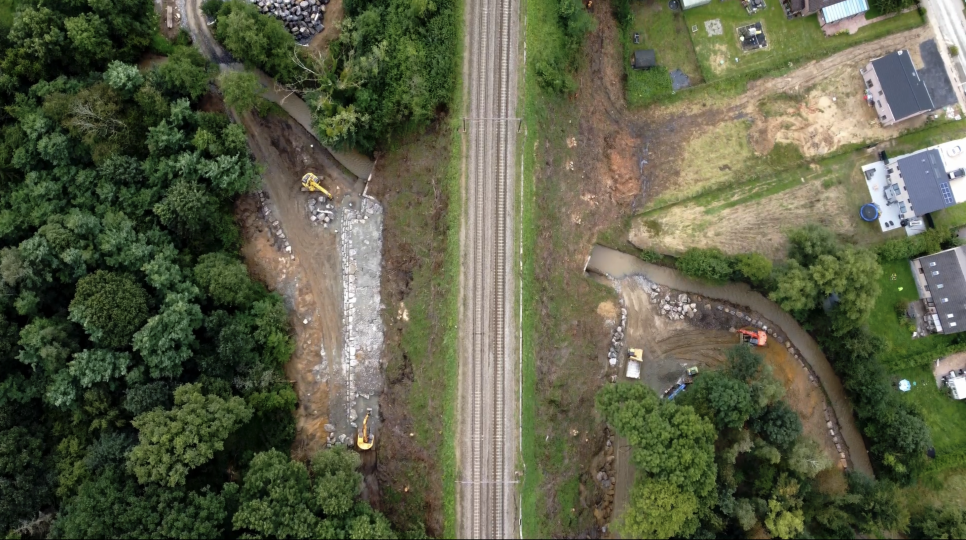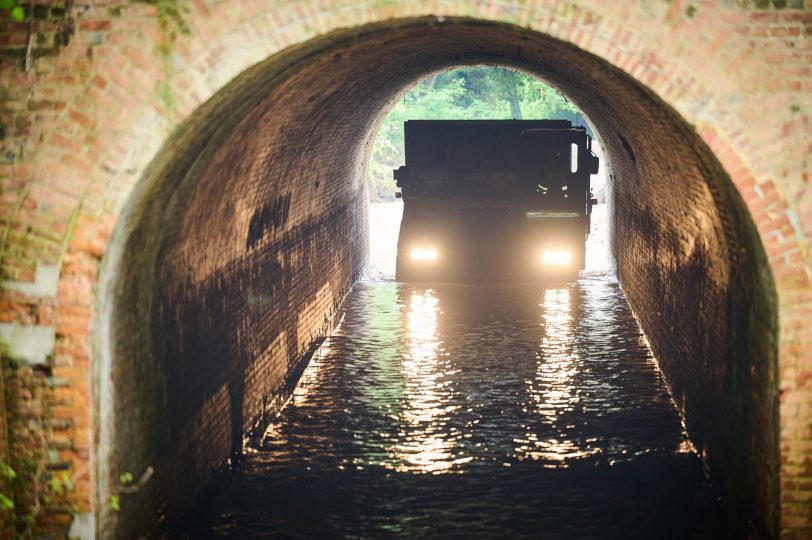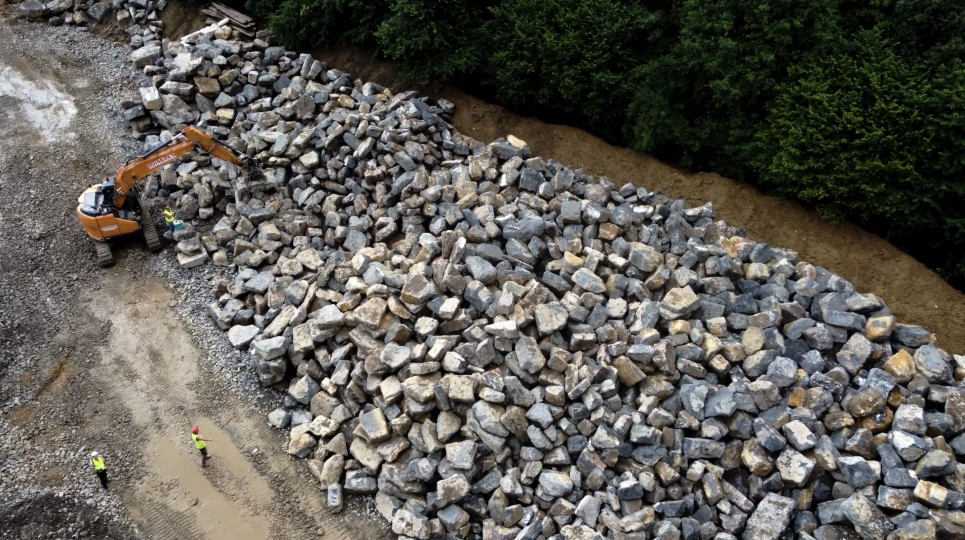North Sea – Mediterranean corridor operational again

The North Sea – Mediterranean rail freight corridor is open again for trains as of this morning (Monday, 16 August). The corridor was closed for weeks due to damage that occurred on its Belgian section during the floods of July.
Infrabel’s spokesperson Thomas Baeken announced the news during last Friday’s RailFreight Live broadcast. You can watch the full video below:
Trackbed damaged by flooded river
The corridor’s railway lines were severely damaged at Mont-Saint-Guibert, near Wavre in Belgium’s Wallonia region. Specifically, a relatively small river passing under the tracks overflowed and carried away the line’s trackbed during the floods. As a result, the line was unfit and unsafe for trains to travel.

Damaged spot unaccessible
Infrabel’s task to repair the line would be time-consuming either way. However, the fact that the damage took place at a river crossing and the fact that houses and trees surround the railway lines at this point made things more complicated and prolonged the conclusion of works.
Understandably, access at the spot that the tracks got damaged was the most difficult part of the reconstruction. Infrabel’s trucks carrying rocks to rebuild the trackbed have to drive through waters, while the infrastructure manager’s engineers had to build a dedicated road to reach the place. Moreover, during the floods, Belgium experienced critical damages in its road network, making it even more challenging to transport the needed construction materials to Mont-Saint-Guibert.

Nevertheless, repair works got in full swing sooner or later. After transporting tens of tons of rocks, Infrabel rebuilt the trackbed and now delivers the North Sea-Mediterranean corridor back to operations.

Alternative through Artère Nord Est
While the rail freight corridor was closed, the infrastructure manager examined two options to keep traffic between Flemish seaports and the Mediterranean Sea disturbed at a minimum. The first option was through Paris, via Kortrijk or Lille. However, this option was quickly rejected since it was a long diversion and presented other implications such as capacity and tonnage limitations. Moreover, it was a difficult route for the drivers to follow.
In the end, prevailed the option of the Artère Nord Est line. This is a railway line in Northern France that runs from Lille to Charleville, Thionville and Metz, where the Belgian route of the North Sea-Mediterranean Corridor also connects. Since early June, the line was damaged and out of use after an accident involving a train and a truck at the level crossing in Hirson. Because of the damage to the level crossing, freight transport was only possible at night.
Also read:
- Flood aftermath: Infrabel in search for alternative routes on the North Sea-Mediterranean Corridor
- Northern France railway reopening offers an alternative to North Sea-Mediterranean Corridor
You just read one of our premium articles free of charge
Want full access? Take advantage of our exclusive offer





